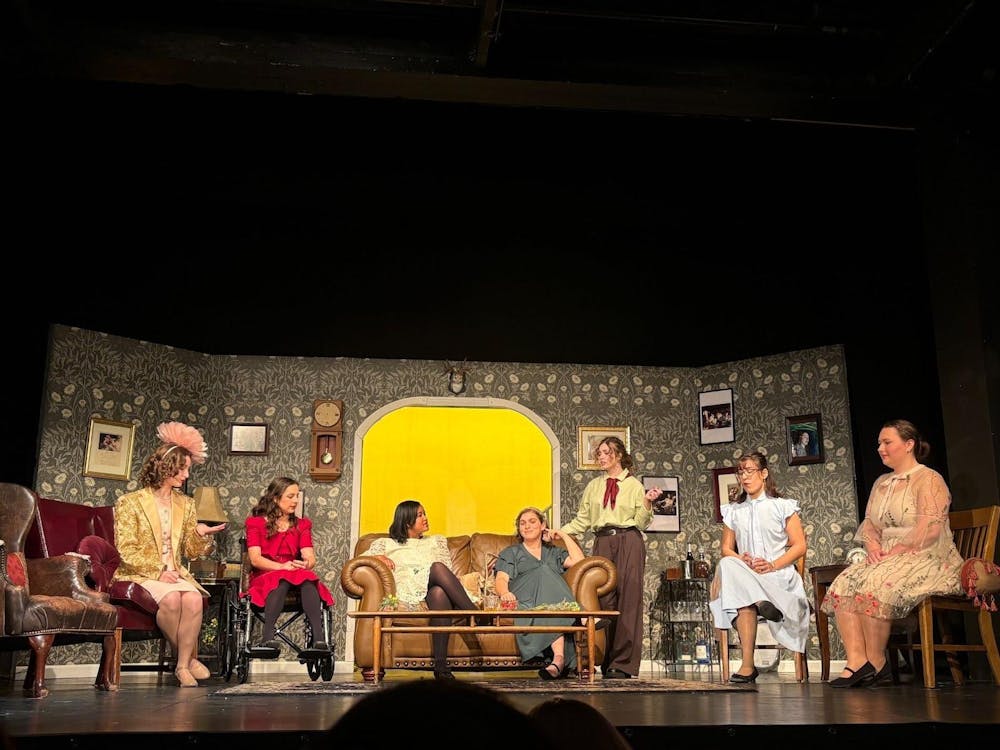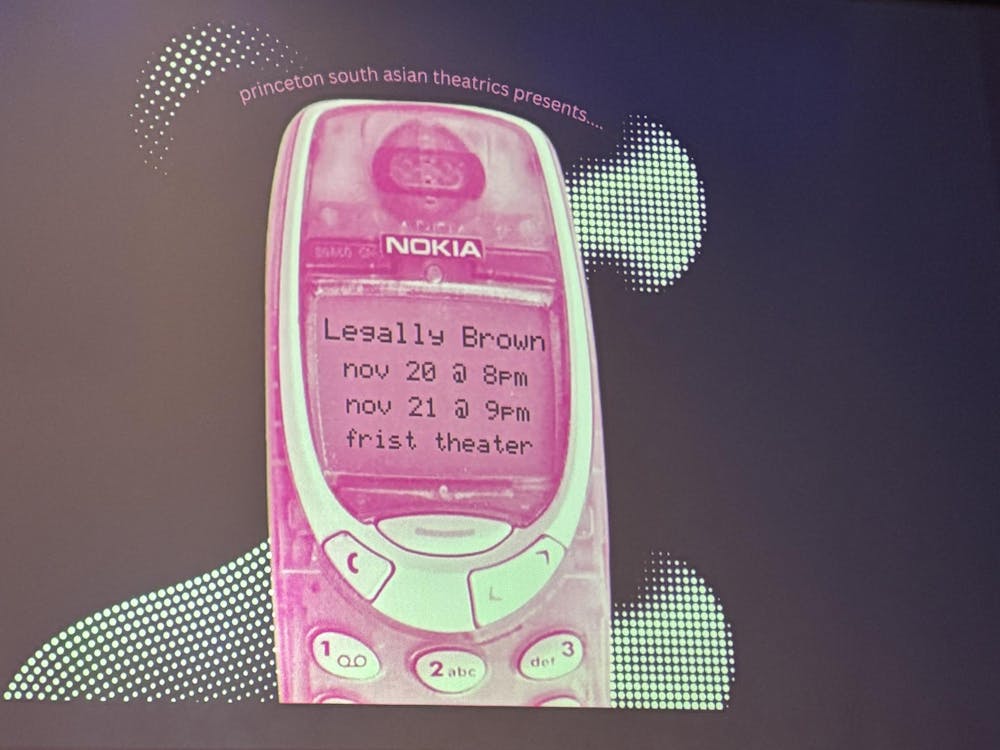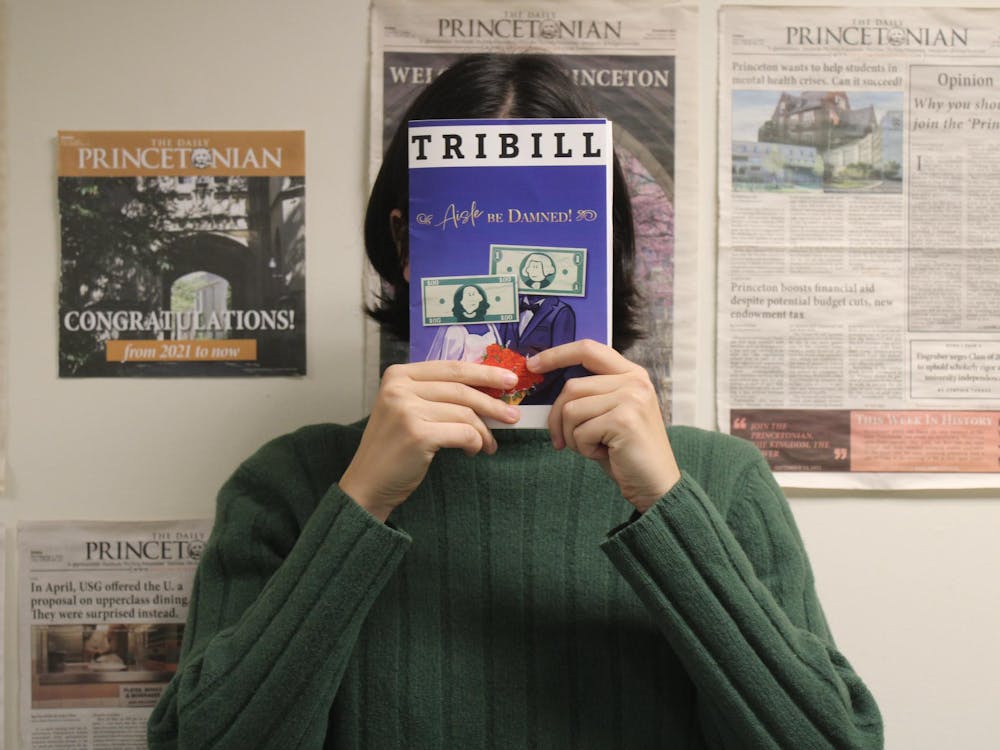Were the young soldiers who fought in Vietnam heroes, courageously combating the Viet Cong to defend the Constitution, or murderers, blindly executing brutal orders as agents of circumstance? The Lewis Center’s “Hero”— a work written, directed and choreographed by Eamon Foley ’15 – asks this question. Foley’s “Hero” effectively humanizes the soldiers, dually depicting the death and tragedy of war as well as the “hopes and expectations” of the soldiers.
This duality is represented even in the frame structure of the musical. The opening moment depicts the postwar national landscape with dancers in tableaus, most notably a young girl holding a balloon. When Sam (Alex Quetell ’17), donning an officer’s uniform and limping diagonally across the stage, reaches downstage, within an arm’s reach of the audience, he pulls a medal off of his chest and examines it for a moment. At the same time that he throws the medal offstage, the girl pops her balloon — and the scene shifts. The depiction of a man’s suffering in an otherwise joyful situation is complicated with the second component of the opening frame. Contemplating suicide, Sam holds a revolver, only to be joined by his girlfriend Phoebe (Kamber Hart ’16), who urges him to put down the gun and instigates Sam’s memory of — and the audience’s journey through — the actions and events leading up to this moment.
The effect of excellent choreography and aerial movement cannot be understated. Just as music in musicals is used to express what cannot be expressed with words, so does Foley’s choreography and movement express the unspeakable. The powerful depiction of Phoebe leading the whole ensemble in anti-war protests, as well as Phoebe’s fight with Sam, is portrayed with traditional choreography that escalates with the use of aerials and the use of actors to transform a set piece into a helicopter.
Tragedy with hope is further established upon Sam’s arrival in Vietnam. Sam gets into a rather vicious fight with Barry (Carson Hughes ’16) on his first day in the forest over pomade and is introduced to a score of characters, his fellow soldiers, such as the hypersexual Clifton (Adin Walker ’16) and the quiet but attentive Katz (Connor Scott Werth ’17). Full-ensemble numbers with characters contemplating death and murder while caressing automatic weapons is contrasted with sequences depicting lust, sex and masturbation. The use of projections to depict newsreels and blood splattering only heightens the performance.
The music is, perhaps surprisingly, one of the strengths of the production. The band (conducted by Vince DiMura, featuring Tyler Nellesen ’17, Guillermo Martinez Cabala ’17, Aqeel Philips ’17, Michael Bruschi ’15, and Sam Harris ’17) excellently reproduces period rock. Vocals (including Pam Soffer ’15, Katie Raber ’16, Emily Libresco ’17, and Greg Kraft ’15) sufficiently frame the main vocalists, one of whom sings for each of the three main characters. Lachlan Kermode ’17 as Sam’s vocal counterpart gives an outstanding performance of the challenging score, and Alexandra Morton ’15 as Phoebe’s vocal counterpart excellently matches Hart’s depiction of the character.
Perhaps the most enthralling pair featured, Jared Brendan Hopper ’18 provides the vocals for Sam’s right-hand-man and love interest Tony (Colby Hyland ’16). Not only do Hyland’s characterization and Hopper’s vocals align, but distinct moments in the performance also set these two apart. Hopper’s excellent delivery of a spoken word adaptation of Tony’s poetry couples with Hyland’s riveting use of the space and body in movement. Similarly, after being captured by the Viet Cong and presumed dead, Tony’s existential crisis is masterfully rendered through Hyland’s use of aerial movement. It is only when Hyland, suspended in the air, fruitlessly attempts to run from the stage and into to the audience that Hopper, standing in the audience, uses an automatic weapon to take Hyland down. The symbolism of the voice killing the body effectively amplifies the tragedy of the performance.
Love interests and the exploration of homosexuality and homophobic sentiment at the time are primary storylines in “Hero.” Romance in “Hero” does not lack chemistry, although the main lovers are notable performers in their own right. As Sam, Quetell gives a refreshing and humanized take on the Vietnam soldier protagonist, a trope worn thin by romanticized portrayals of buff soldiers in guerilla combat on TV and film. As Phoebe, Hart gives the single best performance the University has seen this season. Not only does she flawlessly execute Foley’s challenging dance and aerial choreography, but she breathes life, grit, anger and resilience into her character and body, rendering her performance jaw-dropping.
From the Captain’s (Frank Africano ’16) warning to Sam that he hide his homosexuality in order to maintain dignity to the tap-dancing segment of Trent Kowalik ’17, heightening Sam’s frustration and anger over his circumstances, “Hero” effectively humanizes the soldiers of Vietnam. It is during the final moment that Sam stands alone, surrounded and consumed by a projection of names from the Vietnam War Memorial. This last tableau encapsulates the mission and meaning of “Hero”: the performance asks the question, “Are these men heroes?” and leaves the audience to answer.

“Hero” is the best performance the University will see in the next decade — if not longer.
5 out of 5 paws








